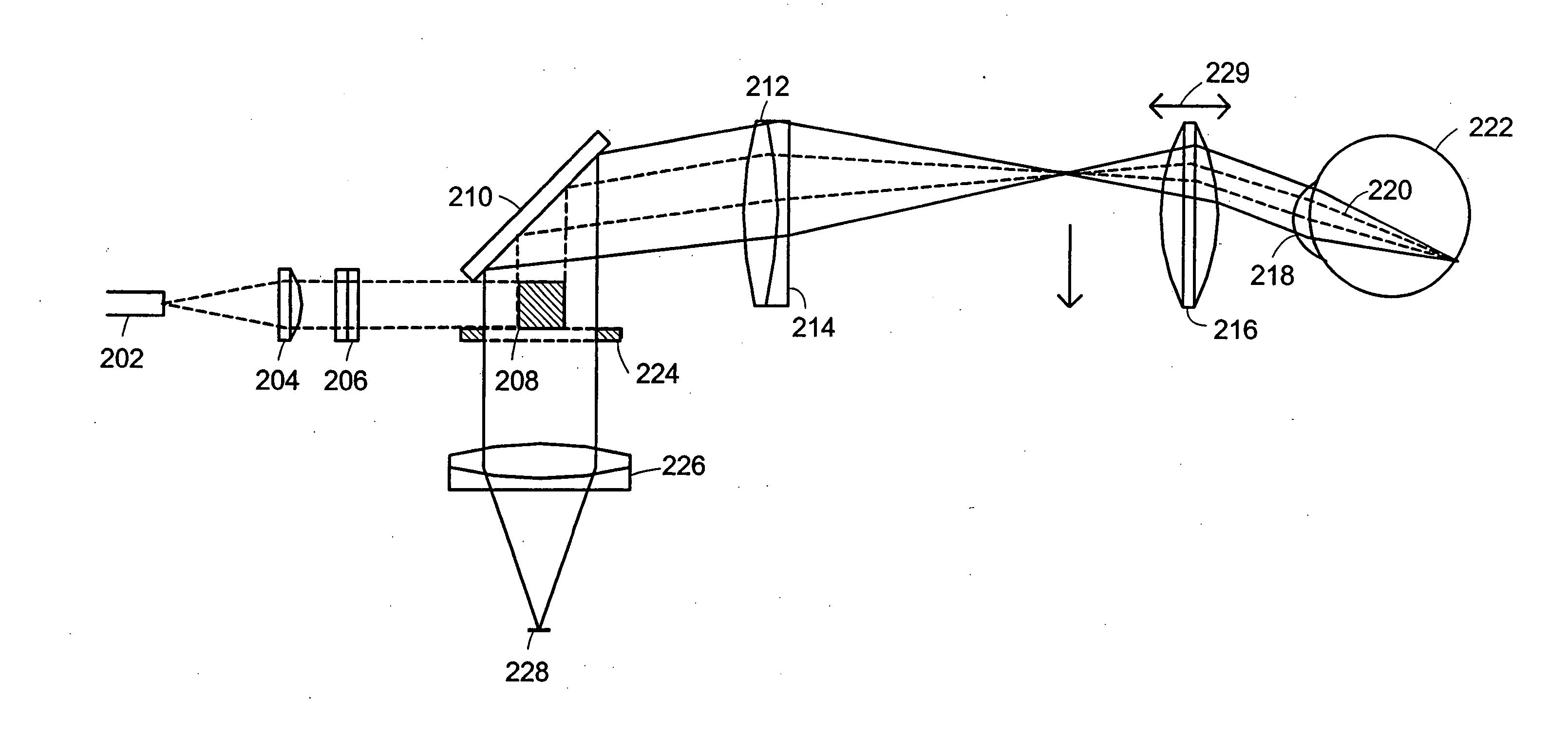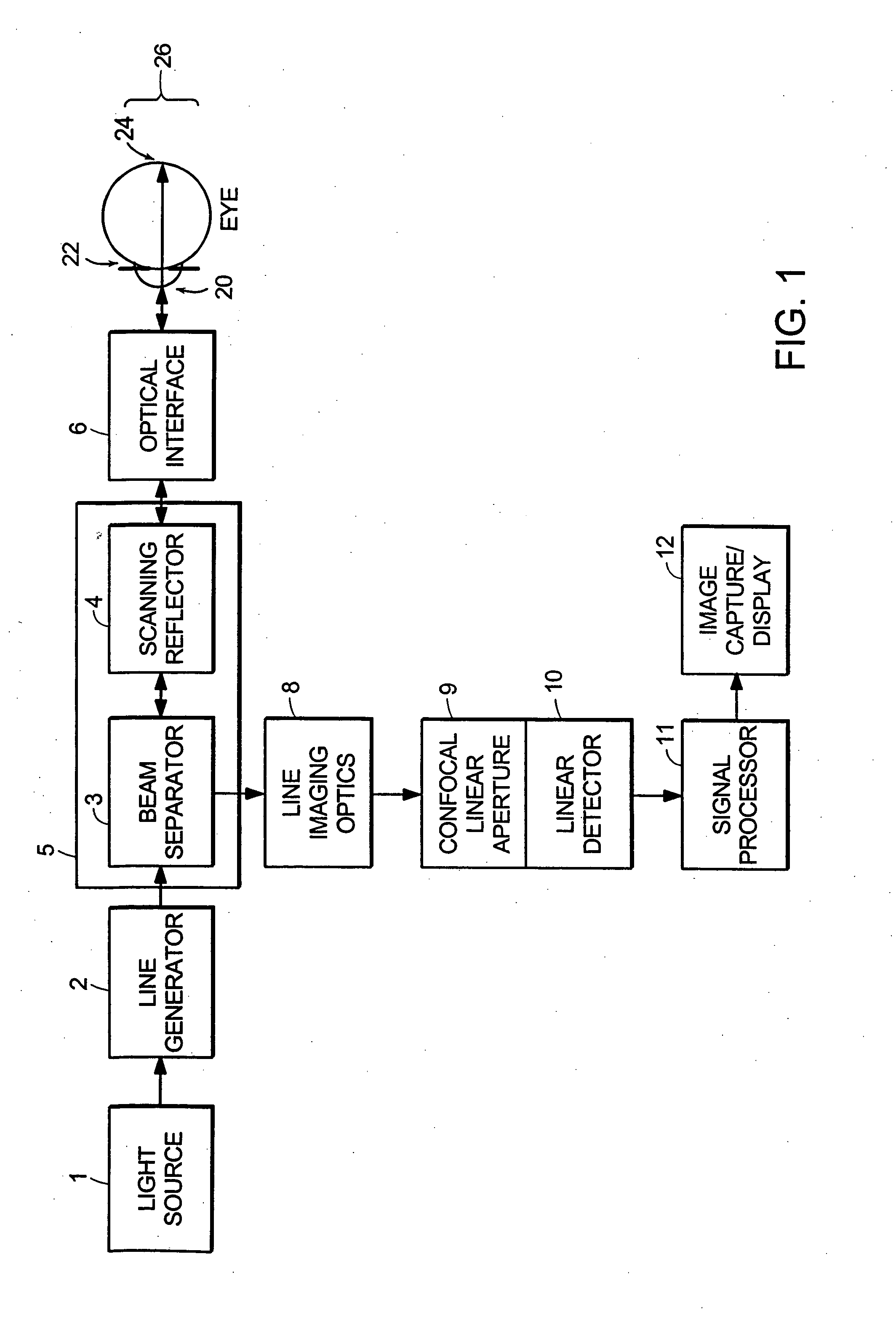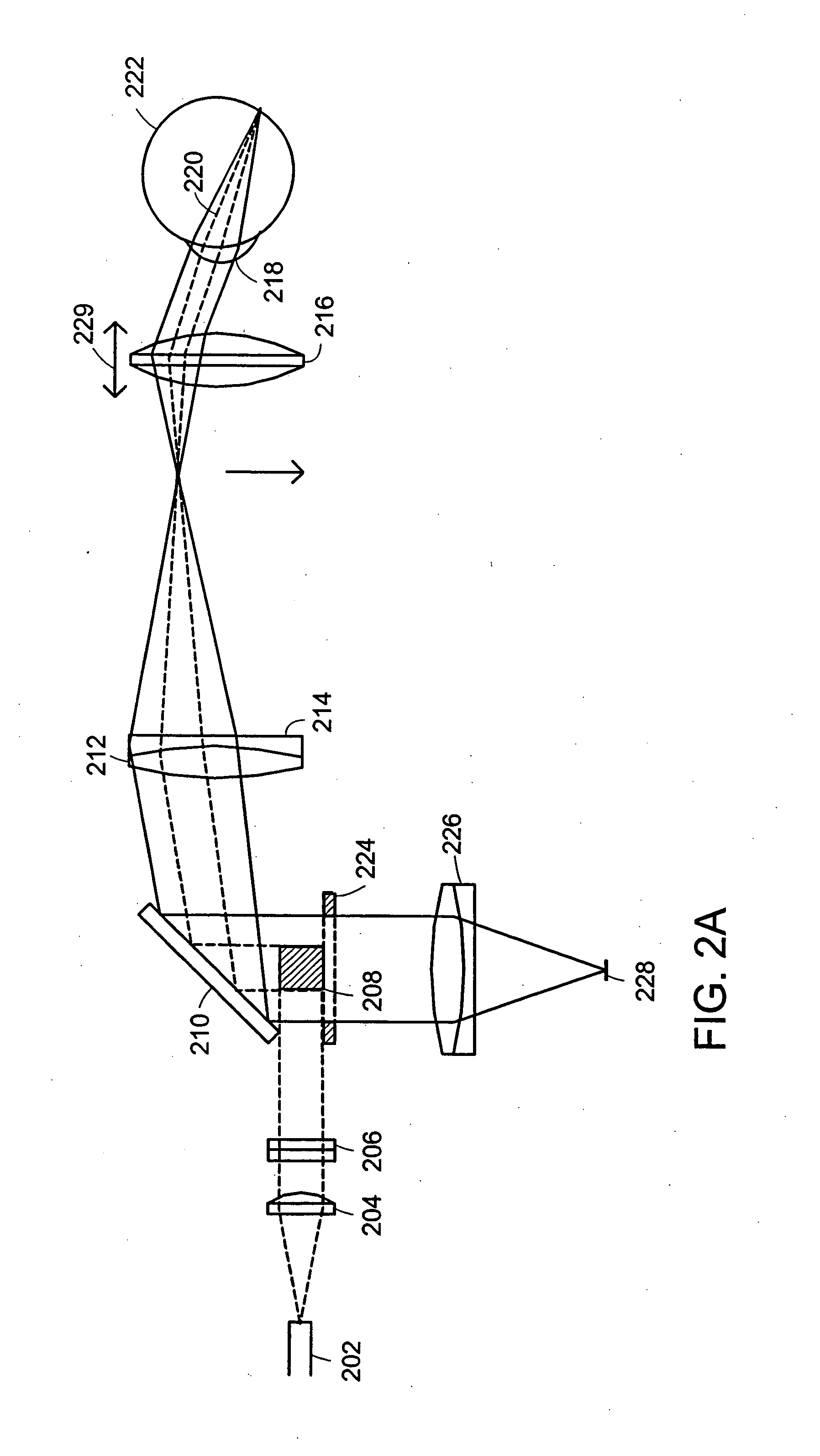Line-scan laser ophthalmoscope
a laser ophthalmoscope and line-scan technology, applied in the field of eye examination systems and methods, can solve problems such as patient discomfort, and achieve the effects of less expensive, compact design, and significant confocal advantage in image clarity and contras
- Summary
- Abstract
- Description
- Claims
- Application Information
AI Technical Summary
Benefits of technology
Problems solved by technology
Method used
Image
Examples
Embodiment Construction
The digital LSLO instrument can be used as a relatively inexpensive multi-mode screening tool to facilitate rapid, non-mydriatic exams for large numbers of patients. In some embodiments of the invention, rapid is to be understood as connoting real time operation. As a portable device, the instrument aids in the early detection of AMD, and other diseases of the elderly, where no economical early warning methods currently exist. The digital LSLO complements existing diagnostics and tele-medicine screening tools for detecting onset of diabetic retinopathy. Many elderly patients may have difficulty in adapting their posture to the demands of any of the standard instruments. Pediatric examination has similar constraints. Instead, instruments should adapt to the needs of the patient. The compact and lightweight LSLO may be used as a hand-held primary care and emergency care aid. The LSLO according to principles of the invention is advantageously used without the necessity to dilate a pup...
PUM
 Login to View More
Login to View More Abstract
Description
Claims
Application Information
 Login to View More
Login to View More - R&D
- Intellectual Property
- Life Sciences
- Materials
- Tech Scout
- Unparalleled Data Quality
- Higher Quality Content
- 60% Fewer Hallucinations
Browse by: Latest US Patents, China's latest patents, Technical Efficacy Thesaurus, Application Domain, Technology Topic, Popular Technical Reports.
© 2025 PatSnap. All rights reserved.Legal|Privacy policy|Modern Slavery Act Transparency Statement|Sitemap|About US| Contact US: help@patsnap.com



